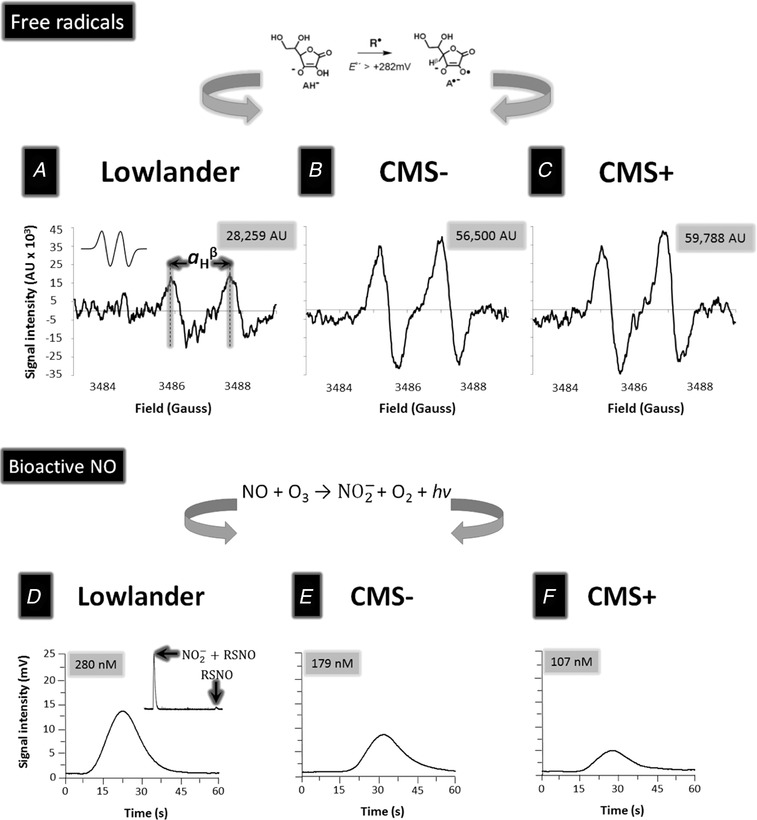Figure 3. Typical electron paramagnetic resonance (EPR) spectra of the plasma ascorbate radical (A–C) and ozone‐based chemiluminescence detection of bioactive (nitrite + S‐nitrosothiols) nitric oxide metabolites (D–F) at rest in the systemic circulation of a lowlander and highlanders without (CMS−) and with (CMS+) chronic mountain sickness.

A–C, oxidation of the ascorbate monoanion (AH−) by any free radical (R•) with a one‐electron reduction potential that exceeds +282 mV will yield A•− (schematic illustrated above). The unpaired electron is delocalised over a highly conjugated tri‐carbonyl π‐system, rendering it resonance‐stabilised and thereby facilitating direct detection by EPR spectroscopy. At the current settings, A•− appears as a (filtered) doublet with a hydrogen hyperfine coupling constant (a H β) of ∼1.76 G (see inset to A for simulated spectrum). D–F, filtered traces of bioactive nitric oxide (NO) metabolites (nitrite + S‐nitrosothiols) generated via ozone‐based chemiluminescence involving the reaction of NO with ozone (O3) that yields a photon (hv) and subsequent conversion to a potential difference. Insert top right highlights the composite signals (before and after sulphanilamide incubation) for separate measurement of nitrite () and S‐nitrosothiols (RSNO). Note general elevations in the signal intensity (AU, arbitrary units) of A•− and reciprocal decrease in the circulating concentration of bioactive NO metabolites in the highlanders, especially in the patient with CMS. Spectra were chosen to best reflect the average signal intensities observed in each of the respective groups.
